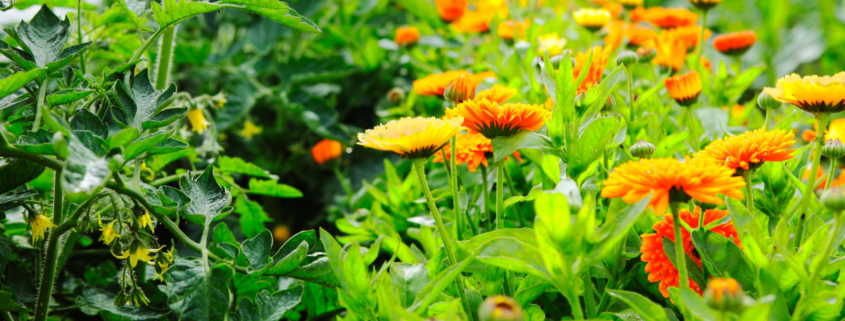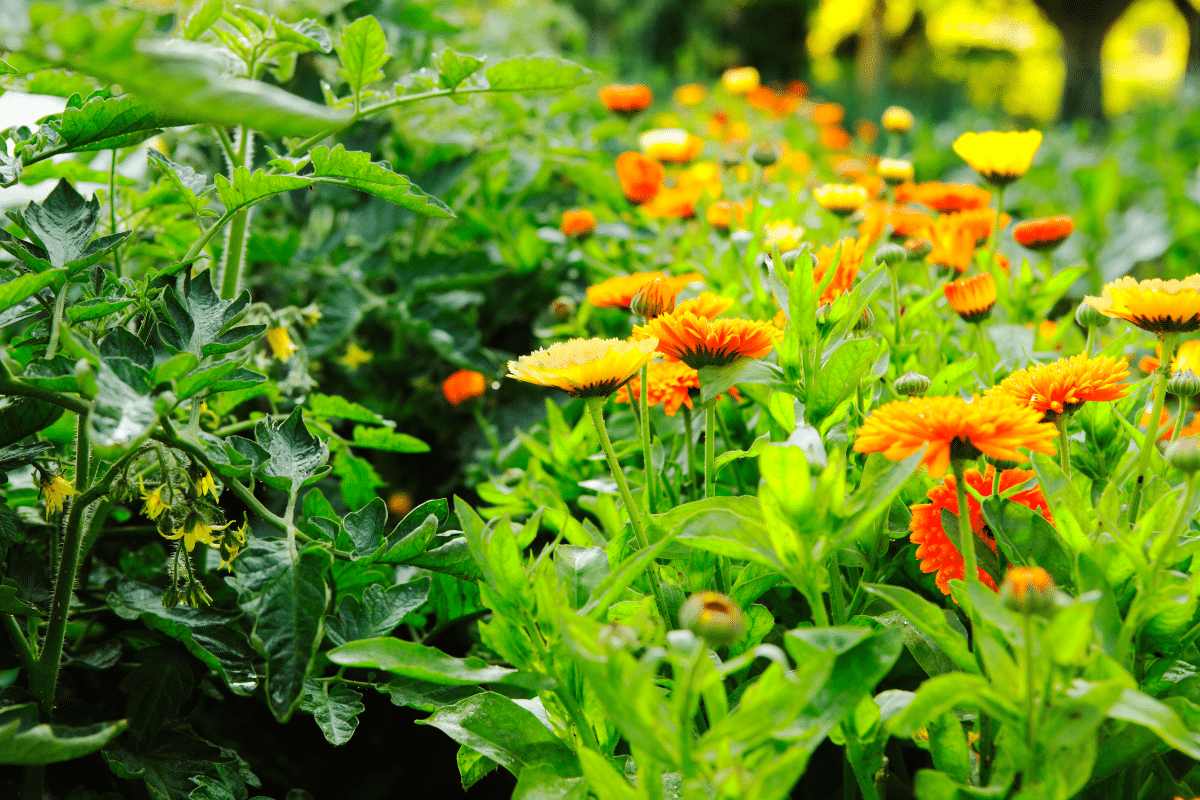Natural Pest Control: Companion Planting Strategies for Your Frugal Garden
So, there you are in your vegetable garden, attempting to repel hungry pests without breaking the bank or resorting to chemicals that might do more harm than good. A tough gig, right? It can be, unless you know about a nifty trick called companion planting to achieve natural pest control—the budget-friendly superhero of backyard gardening.
What Is Companion Planting?
Companion planting is when you mix plants that bugs don’t like with the ones they do. By doing this, you create a team of bug-repellers in your garden. It’s like having your own natural pest control without spending lots of money or using harsh chemicals. These plants grow well together, keep annoying pests away, and make the soil fertile. They’re all working together to make your garden super healthy and thriving.
Benefits of Companion Planting
Gardeners everywhere swear by companion planting, also known as “intercropping” or crop rotation. Picture this: tomatoes cozying up with basil, marigolds chilling with roses, or cucumbers buddying up with corn!
Pest control
One of the primary reasons home gardeners turn to companion planting is for natural pest control. Certain plants produce natural compounds that repel or deter pests, while others attract beneficial insects that prey on garden pests. By strategically interplanting these plants, you can create a natural defense system against common garden pests. Companion plants team up to keep pests at bay and, at the same time, attract helpful bugs.
Soil health
Companion planting isn’t just about keeping pests at bay; it’s a game-changer for soil health, too. Take, for instance, the magic of legumes like peas or beans. They’ve got a neat trick up their sleeves—they team up with nitrogen-fixing bacteria to boost soil fertility by adding nitrogen. That extra nitrogen is a boon for nearby plants, fueling their growth. It’s like nature’s own fertilizer!
Weed suppression
Certain companion plants, such as fast-growing groundcovers or tall plants that provide shade, can help suppress weed growth by limiting sunlight and space for weeds to thrive. This reduces the need for manual weeding or herbicides.
Eco biodiversity
Companion planting can support biodiversity in your garden. Cynthia Nations, PhD, who knows her stuff as a retired education consultant and master gardener, says having a garden with lots of different plants is a smart move. It helps clear the problems of sticking to just one type of plant, known as a monoculture—a magnet for pests and plant diseases.
But when you mix things up with companion planting and switch up where you plant stuff each year, it’s like you’re throwing those pests off their game and keeping your soil in tip-top shape. Plant diversification creates a habitat that attracts beneficial insects, birds, and pollinators, providing a balanced ecosystem.
Companion Plants for Pest Control
There are several common companion plants that are known for their pest-repelling properties. These plants can be strategically paired with susceptible crops to deter pests and promote healthier growth.
Marigolds
Marigolds are well-known for their ability to repel nematodes, aphids, and other harmful insects. Their strong scent and root secretions act as a natural deterrent. Planting marigolds alongside susceptible crops like tomatoes or roses can help protect them from these pests.
Nasturtiums
Nasturtiums deter aphids, whiteflies, and squash bugs. They are beneficial when planted near cucumbers, squash, or tomatoes.
Lavender
Lavender repels fleas, moths, and mosquitoes. Planting lavender near cabbage, onions, or carrots can help protect them from pests.
Chives
Chives repel aphids, Japanese beetles, and carrot flies. They can be planted alongside roses, carrots, or tomatoes.
Mint
Mint deters ants, cabbage moths, and rodents. Planting mint near cabbage, peas, or tomatoes can help repel pests.
These are just a few examples of companion plants that can aid in pest control. Experiment with different combinations to find what works best for your garden.
Tasty Pest-Free Combinations
The easiest way to think of what might grow well together is to consider what tastes good together. Take pico de gallo: if you plant peppers and tomatoes, onions and garlic together, you’re going to have a nearly pest-free bed.
Companion Planting for Specific Pests
If you’re dealing with specific pests in your garden, certain companion plants can help target those pests directly. Here are a few examples:
Cabbage worms
Planting dill, sage, or rosemary near cabbage can deter cabbage worms.
Carrot flies
Planting onions, leeks, or chives near carrots can help repel carrot flies.
Squash bugs
Nasturtiums or radishes can help deter squash bugs when planted near squash or zucchini.
Remember to identify the pests you’re dealing with and research companion plants that can target and repel them effectively.
Companion Planting for Specific Crops
Companion planting is not just about pest control. It can also improve the growth and productivity of specific crops. Here are a few examples:
Tomatoes
Planting basil, marigolds, or parsley near tomatoes can improve their flavor and repel pests.
You know, basil isn’t just a tasty herb for your pasta sauce, it’s also a natural bug-repellent! Yep, its strong smell keeps those pesky flies and mosquitoes at bay. Plus, it’s like a magnet for bees and other helpful pollinators, which is excellent news for your garden’s productivity.
If you plant basil near your tomato buddies, it can actually help keep away the insects that love to munch on tomato plants. It’s like having your own little pest control squad right there in the garden! And with those busy bees buzzing around, you can expect even more juicy tomatoes come harvest time.
Cucumbers
Planting radishes, sunflowers, or dill near cucumbers can attract pollinators and deter pests. Legumes like peas, beans, and lentils are like the supportive buddies that help cucumbers grow strong. Root vegetables such as radishes, beets, carrots, and garlic are like the underground crew, working together to keep the soil healthy.
Corn
Planting beans or peas near corn can provide nitrogen fixation and support better growth.
Research the specific needs and preferences of the crops you’re growing to find suitable companion plants that can enhance their growth and yield.
Learn More About Companion Planting
It’s not possible to give an exhaustive treatment for the fascinating subject matter in this single post. So, if you, like I, are interested in learning more specifics about how to use natural options to repel garden pests, improve our gardens’ soil, and create eco-friendly outdoor spaces, consider the following:
Online
- Companion Planting Chart and Guide for Vegetable Gardens
- Planning a Companion Planting Garden
- Companion Planting in Home Gardens
Books
EverydayCheapskate™ is reader-supported. We participate in the Amazon Services LLC Associates Program and other affiliate advertising programs, designed to provide a means for us to earn from qualifying purchases, at no cost to you.
More from Everyday Cheapskate
Please keep your comments positive, encouraging, helpful, brief,
and on-topic in keeping with EC Commenting Guidelines
Last update on 2024-04-29 / Affiliate links / Images from Amazon Product Advertising API


















Great info! I would add: be aware of any animals that are attracted to either your garden or companion plantings. Mint is definitely a great companion plant UNLESS you have bears in your area. It’s unbelievable what lengths a bear will go to for some beautiful, fresh mint.